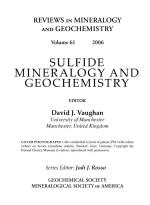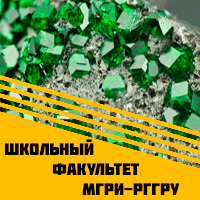Добрый день, Коллеги. Важное сообщение, просьба принять участие. Музей Ферсмана ищет помощь для реставрационных работ в помещении. Подробности по ссылке
Sulfide mineralogy and geochemictry / Минералогия и геохимия сульфидов
The metal sulfides are the raw materials for most of the world supplies of non-ferrous metals and, therefore, can be considered the most important group of ore minerals. Although there are several hundred known sulfide minerals, only a half dozen of them are sufficiently abundant as to be regarded as "rock-forming minerals" (pyrite, pyrrhotite, galena, sphalerite, chalcopyrite and chalcocite; see Bowles and Vaughan 2006). These mostly occur as accessory minerals in certain major rock types, with pyrite being by far the most important volumetrically. It is also important to note that the synthetic analogs of certain sulfide minerals are of interest to physicists and materials scientists because of their properties (electrical, magnetic, optical) and have found uses in various electronic or opto-electronic devices. Recently, this interest has been directed towards the use in such devices of metal sulfide thin films and of sulfide nanoparticles, topics touched upon in Chapter 3 but not discussed in detail in this volume (but see, for example, Fuhs and Klenk 1998; Bernede et al. 1999; Trindade et al. 2001). The importance of sulfide minerals in ores has long been, and continues to be, a major reason for the interest of mineralogists and geochemists in these materials. Determining the fundamental chemistry of sulfides is key to understanding their conditions of formation and, hence, the geological processes by which certain ore deposits have formed. This, in turn, may inform the strategies used in exploration for such deposits and their subsequent exploitation. In this context, knowledge of structures, stabilities, phase relations and transformations, together with the relevant thermodynamic and kinetic data, is critical. As with many geochemical systems, much can also be learned from isotopic studies. <...>




